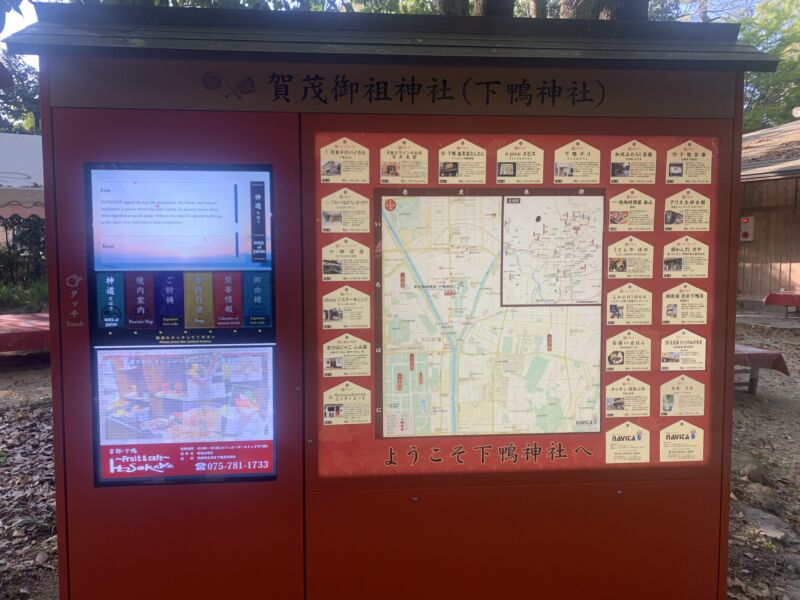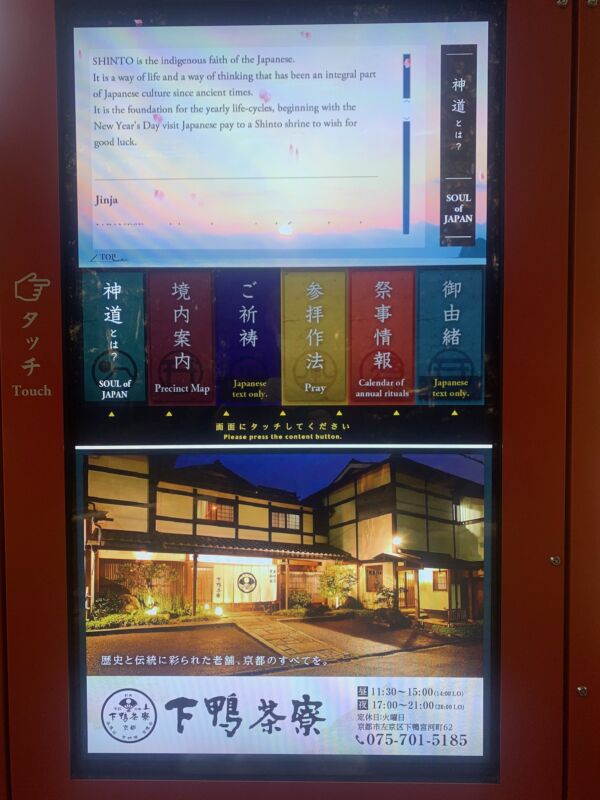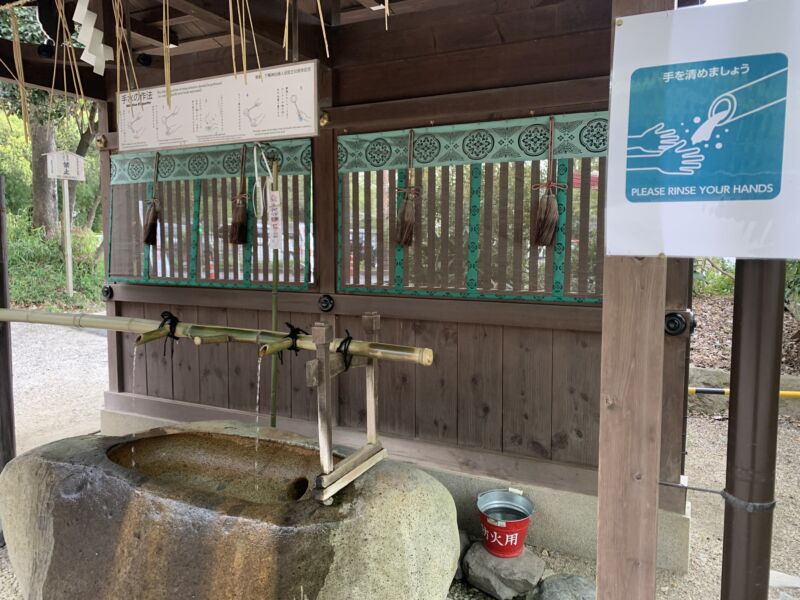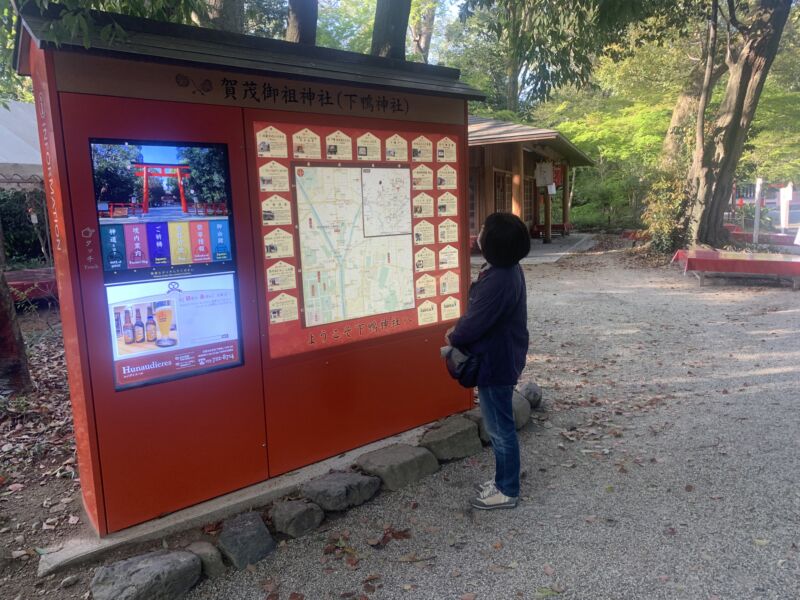
Regular readers of this blog will know that we have been keeping an eye on the annual additions to our neighbouring World Heritage shrine of Shimogamo Jinja, here in Kyoto. In recent years this has seen the destruction of considerable portions of the sacred grove, Tadasu no mori. I’m not sure if Unesco is aware of this.
Yesterday while crossing the shrine precincts I noticed something that I had not been aware of before – a glowing bilingual electronic panel, ostensibly to dispense information while at the same time displaying advertisements for local businesses. The latter took up three-quarters of the panel, the former was given only a quarter.
One understands the need to raise money, but commercialism on an intrusive lit-up panel seems undignified for an ancient site. One wonders what will come next. Subshrines advertising Pocari Sweat? Ema with the logo of Nintendo? Priests with Purple Sanga Football Club stamped on their robes?

The shrine is currently directing visitors to visit its new rugby shrine. There is increasing signage in English. There are new offices displaying stained glass (provided by a donor, we understand). Trees being planted bear the names of companies who sponsored them. Step by step the shrine is being remodelled from an ancient site of arcane rituals to a commercial centre with international tourist appeal.

As well as the advertisements at the bottom and on the right hand side, the panel has a What is Shinto explanation, a precinct map, gokito requests of the kami, how to pray, and a calendar of annual events.
As an explanation of Shinto, the panel says: ‘Shinto is the indigenous faith of the Japanese. It is a way of life and a way of thinking that has been an integral part of Japanese culture since ancient times. It is the foundation for the yearly life-cycles, beginning with the New Year’s Day visit Japanese pay to a Shinto shrine to wish for good luck.’
As an explanation Jinja, the panel says: ‘Since ancient times, Japanese have expressed the divine energy or life-force of the natural world as kami.’
As an explanation of kami, the panel says: ‘Since ancient times Japanese have expressed the divine energy or life force of the natural world as kami.’ An interesting explanation for a shrine dedicated to ancestral spirits of the Kamo clan!

***********************
For an account of other changes and additions at Shimogamo, see here.

I’m saddened to hear this news. I’ve somehow, perhaps naively, thought that the Shrine would be more insulated from such commercialism. I do hope the “powers that be” see that this may not be the best way forward. To undo the ancient and sacred heritage that this represents seems very, very shortsighted.
To be fair, most of what they do is aimed at improving the facilities and reviving ancient customs. No doubt too there is heavy financial pressure to increase revenue. But the inroads being made into the sacred grove, Tadasu no mori, does worry me. Very substantial bites are being taken out of it year after year.